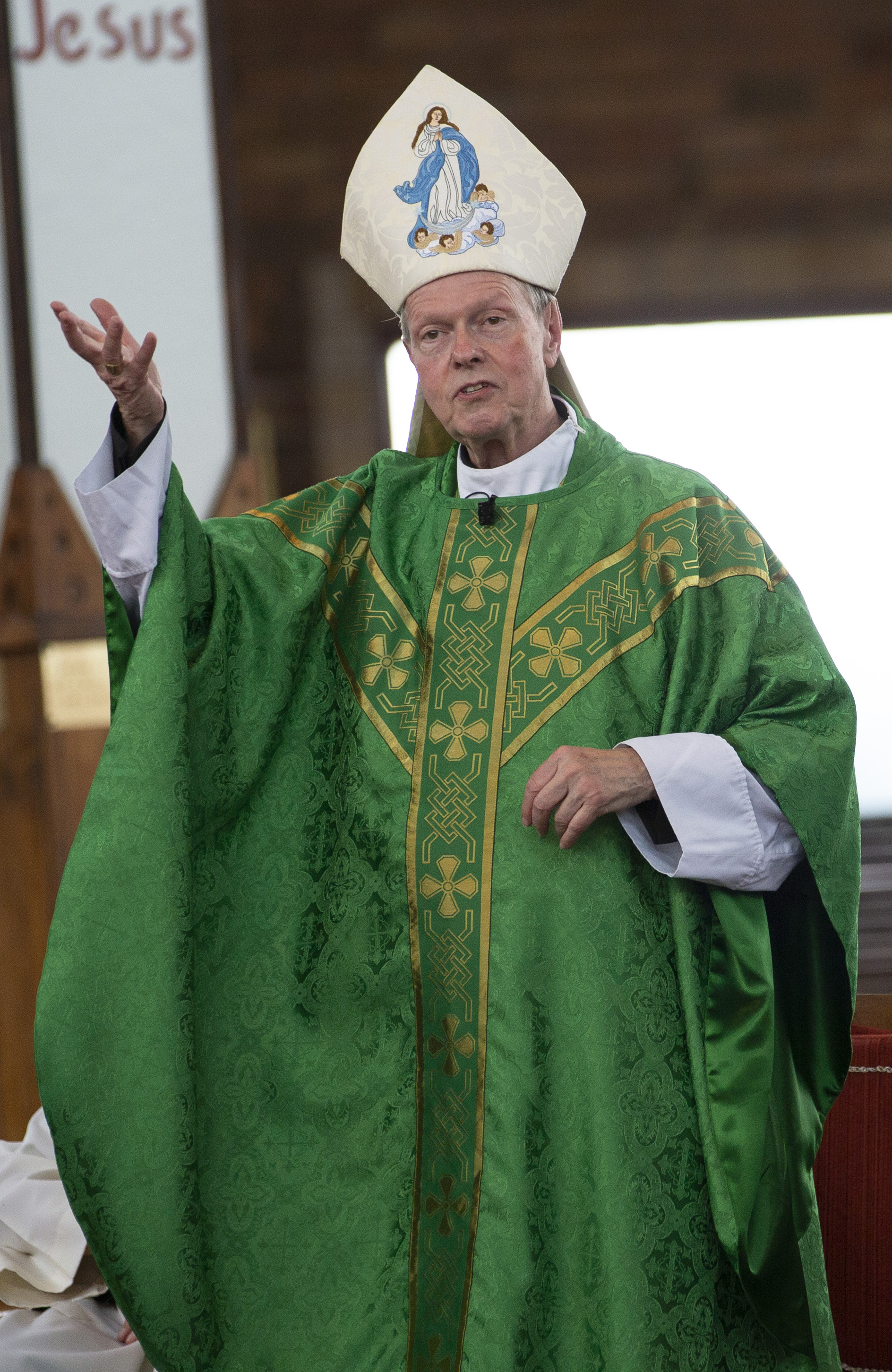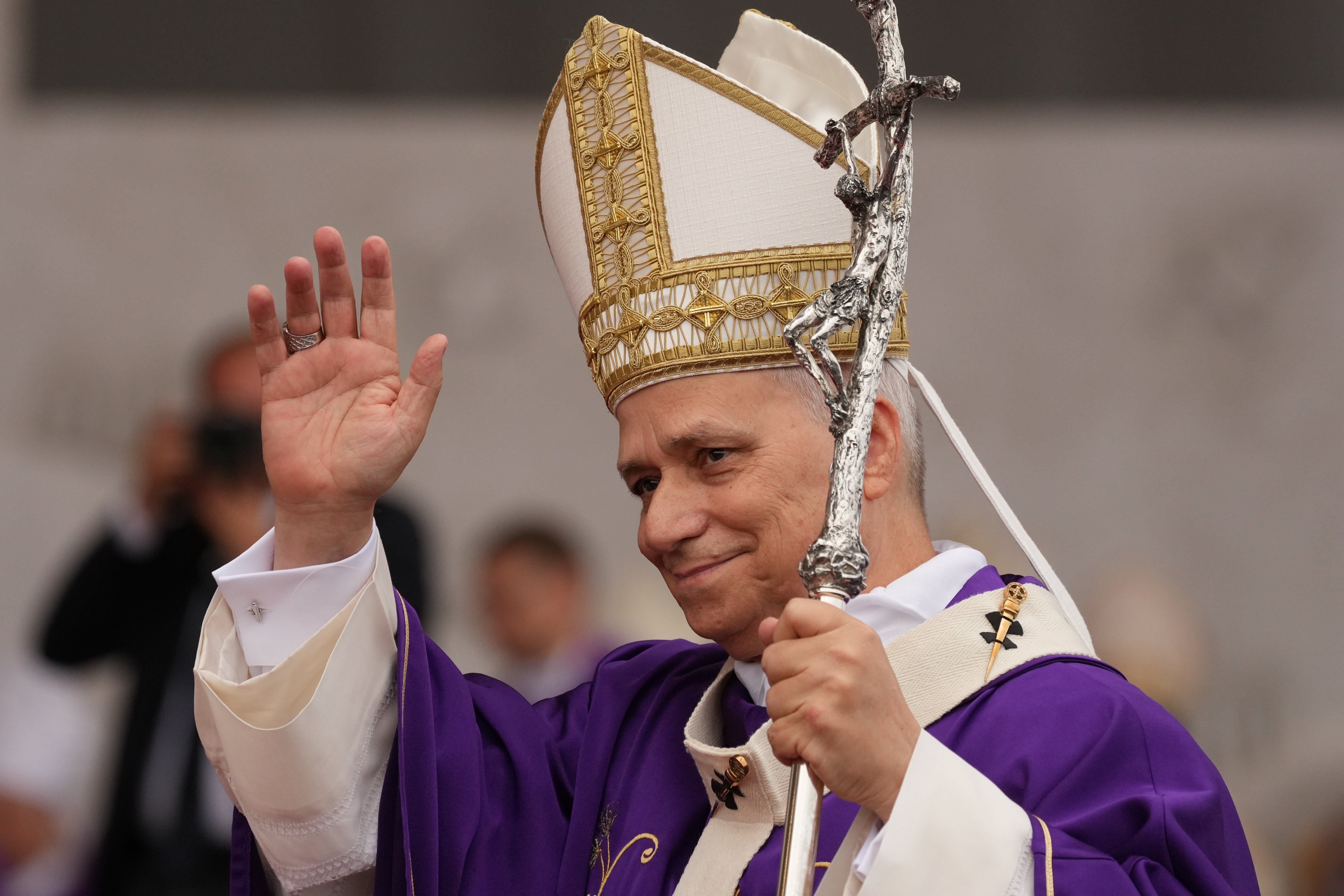April 20, 2022 at 2:07 p.m.
‘Come out of the darkness:’ the challenge of the Resurrection
C.S. Lewis once said, “Christianity, if false, is of no importance, and if true, of infinite importance. The only thing it cannot be is moderately important.” The affirmations of our faith are bold and clear. The first is that Jesus Christ has died. Providentially, a more humiliating, painful and conclusive form of execution could not have been devised. The Romans had a point to make about the absolute power of their rule over anyone who would challenge it and that no one could escape it alive. If one were to overcome it, it could only be through resurrection from the dead.
Not that anyone expected this to happen. True enough, Jesus had made frequent references throughout the gospels to the Son of Man being crucified and rising on the third day, but despite his repeated, prophetic remarks, no one seems to have taken him seriously or, at least, literally. It is clear enough that the first reaction to both reports and observations of the tomb found empty was fear and suspicion. Everyone had their own theory: grave robbery, political trickery, hysterical fabrication — all the predictable reactions one would expect from people who, despite their lack of scientific and technological sophistication, did not suffer from deficient intelligent quotas or naïveté about natural processes.
It was no stagecraft when one soldier thrust that sword into the side of the already dead Jesus so the body could be taken down before the Sabbath began — in this case a special one, the Passover — according to the account of John who declares himself an “eyewitness” (cf. Jn 20:31-27), and not the only one who saw. No contemporaneous historians — Roman, Jewish or Christian — dispute that Jesus really lived and died. Nor would Roman authorities have embarrassed their pride in what they did so well — political executions — as to let one get by them. They were good at this!
Jesus died, and Jesus also rose. That is the second affirmation of our faith. Equally essential. The explosive suddenness and strangeness of the experiences reported on Easter Sunday, contrasting so sharply with the behavior of the disciples on Good Friday, reveal a turnaround of epic proportions, impossible to have imagined from men who were frightened, scattered and despondent only a few hours before. The biblical testimony about “three days” tracks a complete turnaround within a period of not much more than 36 hours, hardly enough time to come up with a story that so radically changed the lives of this small band of witnesses and would set the world on fire. “Christ is risen” became the liberating cry that would not only proclaim the lordship of Jesus, but the future and promise for everyone who would believe in him: if Jesus died and is risen, then all have hope in the same destiny.
At its heart, the Gospel is one of liberation from the domain of darkness: sin, oppression and depression, all that binds us in slavery to fear. It is an invitation, a gift to come out of that darkness, a challenge even because it requires a leap of faith to abandon the “security” of the chains of bad habits, the hardened calluses of the bad attitudes, the deep quagmires of learned and programmed despair — really the propaganda of a fallen world that preaches there is no way out but surrender to its lies. Here is the truth that sets us free: we are made by love and for love to share eternal life with the God who made us out of love.
The resurrection was as necessary as the death of Jesus Christ. Some have seen the expiatory death of Jesus as a playing out of the wrath of God the Father for the sin of the world, taking it out for our sake, as it were, on his only Son. A better way to see it, however — the truth about this redemptive action — is to see it as a monumental outpouring to divine love, necessitated only the extent to which human sin dragged humanity into the abyss and the willingness of God to go the full extent of that quagmire into which it had descended.
It is the depths to which Christ sank, freely and faithfully, that reveal to us how far God’s beloved Son would go to show us the divine passion and compassion for the most abject sinner, the most hopeless soul. God wants every human being to be saved, if only we are willing to accept the challenge of believing that what we most deeply hope for is what we are hard-wired for from the moment of our conception: a life that will not end with death or anything that life throws at us in our fallen, broken humanity.
To discount or to deny the Resurrection is, in a real sense, to suppress our own deepest hopes and desires. Is not what brings tears to our eyes and makes our hearts seem to expand in our chests at stories of redemption and forgiveness and transformation that deep human hope we all have that what we yearn and long for is really a thirst for what we are really made for: much more than any one thing that this world can ever satisfy?
Jesus invites us all to “come out” and “come forth” from the tomb as he commanded Lazarus, dead, bound and decaying for four days (Jn 11:1-44). “Untie him and let him go,” Jesus said, after the dead man had emerged (Jn 11:44). These healing and restorative words of Jesus are expressions of what God wants for all of us, and what God signaled to the whole world in the Resurrection of Jesus from the dead: that life and not death has the final say.
There is no other answer to the misery and mystery of suffering and death in this world that is all around us, crouches at our feet, and threatens to overwhelm us in a sea of depression, cynicism and despair. God is alive and lives in the personal presence of Jesus Christ, risen and alive among us, celebrated in the sacramental life of the Church, “which is his body, the fullness of the one who fills all things in every way” (Eph 1:23).
Come out of your tomb, Jesus says to each of us, challenging us to have faith in him who knows the worst of what humanity can become, absorbed it, defeated it once and for all, and risen from it, drawing us all into that divine love that alone has the power to overcome it. Christ has died, Christ is risen, Christ will come again!
facebook.com/AlbanyBishopEd
@AlbBishopEd
SOCIAL MEDIA
OSV NEWS
- Full text: Pope Leo XIV Angelus address Dec. 21
- ‘Joy Within His House’: An inside look into the life of cloistered nuns
- Avatar: Fire and Ash
- Washington Roundup: Trump suspends green card lottery; health care subsidies set to expire
- Catholic actor finds Christmas joy in helping US charity
- Trending: A (young) revival in the faith?
- Upcoming symposium gives nod to St. John Paul II’s ‘Letter to Women’
- Experts offer strategies for connection during Christmas amid US ‘epidemic’ of loneliness
- A new rider at the helm: Bishop Richard Moth named archbishop of Westminster
- Cardinal Pizzaballa visits Gaza City’s Holy Family Parish before Christmas








Comments:
You must login to comment.